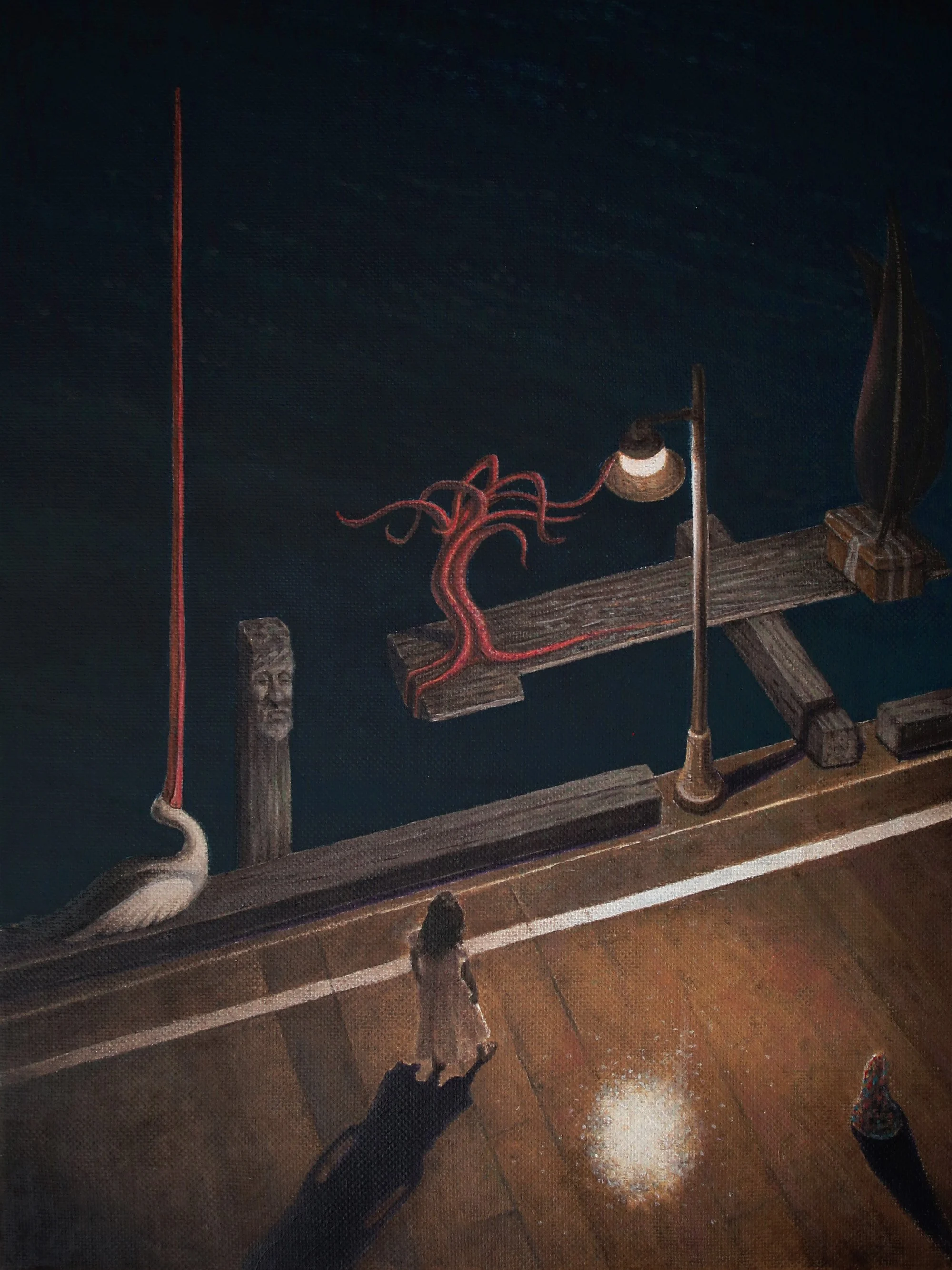Simon Weir - The Sydney Surrealist
Surrealist painter Simon Weir became obsessed with the Surrealist movement after seeing Dali paintings at the age of 17 and realising they spoke to him in a language that immediately made sense. He would go on to read all of Dali’s writings (a copious and initially impenetrable oeuvre charting Surrealism’s theoretical journey), and become a globally-recognised Dali expert.
Weir’s Surrealist painting developed along the same time frame, weaving in the movement’s complicated debates about dreams and reality with his own intuition about how the world can be perceived and re-created on a canvas – visually and philosophically.
Based in Sydney, Weir uses the local landscape as inspiration and Surrealist backdrop. A mysterious veiled clump appears on steps in The Rocks, a tentacular creature watched by a little girl haunts Woolloomoolloo’s Wharf at night, and a gigantic sandy dog’s head (or is it a dingo?) rests against Guerrilla Bay’s waters on the South Coast.
Seeing Sydney and its surrounds through a Surrealist’s eyes is an arresting novelty and, if you’re prepared to lean in, Weir’s imagination leaves these places quite transformed. Who wouldn’t now look for the giant dog if they visit Guerrilla Bay? Will the Wharf’s docks in the wee hours ever seem the same? It’s like LSD, but free, and there for the taking.
Perceiving reality in dreams, versus perceiving dreams (or phenomena) in reality, is an old and ongoing battleground for Surrealists. But once Dali realised that dreams were limited, and that the mind’s ability to see phenomena in reality - like a dog in a landscape - was much more fun and interesting, he advocated for seeing the surreal in real life, and so Surrealism grew into a different phase. It’s this iteration that Weir evokes most effectively in his own work.
Another lark of Surrealism is one that goes back to de Chirico’s edible-but-not-edible, iron-but-not-iron artichokes (The Melancholy of an Afternoon). That is, that the painter may insist privately that the work means something utterly different to what is presented, just as de Chirico privately maintained his relatively juicy looking artichokes were made of iron. That idea, with its deception and compelling tension, opened the conceptual gates for Dali, Magritte and other Surrealists, and produced the wonderfully warped logic of “this is not a pipe”.
Weir’s paintings play less with that sleight of hand, and more sometimes with, perhaps, a sleight of eye. In Live (Guerrilla Bay), he draws the viewer in with classical composition and carefully composed light and colour, and then adds flat, bright objects that look like they’ve been created in Microsoft Paint Pad. They’ve no right to be there among the elegant oil and chiaroscuro, but they are, so get used to it. You might even find it trippy. Welcome to Surrealism.
In other paintings, he uses a more recognisable Surrealist composition, where phantasmagoric and incongruous creatures co-exist in serene but odd environments. The painterliness draws you into these little worlds, no two of which are the same, and they are the kind of works that reveal more the more you engage with them.
And finally, there’s a composure about Weir’s works that may come from the fact that he’s not in any rush to complete the paintings. Some take a year or two, he says, in which time he dabbles, not troubled by market demands, until his imagination has run out of alterations, and only then is the painting deemed finished.
- By Margie Smithurst
Join us for Opening Night of
D/O.83 Simon Weir - The Sydney Surrealist
Wednesday April 17th from 5-7pm at Disorder Gallery
Simon’s work will be on display from
April 17th through April 27th at Disorder Gallery



